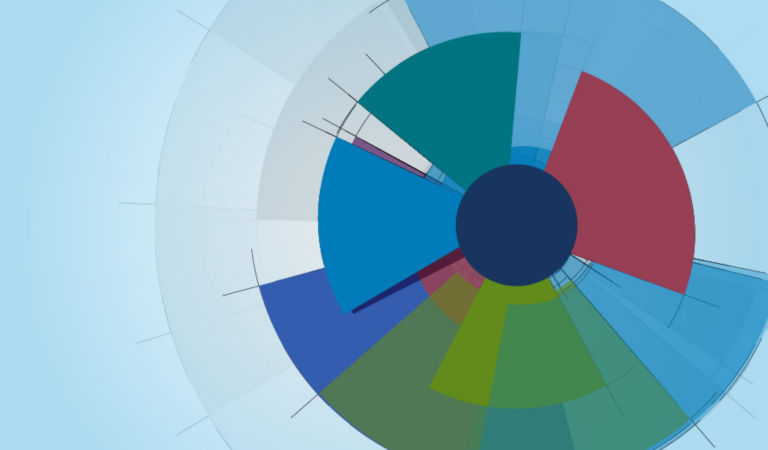Equities
Global equities (+1.2%) rose in July, ending the month with a 14.8% gain year to date. Political developments, central bank policy, and an escalating conflict in the Middle East were key themes in the month. Sir Keir Starmer became the UK’s prime minister after the Labour Party secured a landslide victory in the general election, bringing more stability to the government. The final round of France’s legislative elections ended with an alliance of left-wing parties gaining the most seats. However, no party won an absolute majority, and a fragmented political landscape left the country with an unclear path to a new government. US Vice President Kamala Harris will likely become the Democratic nominee for president after Joe Biden relinquished his bid for a second term, following pressure from the Democratic party and greater support for Republican candidate Donald Trump in the wake of an attempted assassination. On the monetary front, the Bank of Japan (BOJ) hiked interest rates, sending the yen sharply higher, while the US Federal Reserve (Fed) signaled an increased likelihood of a September rate cut and the Bank of Canada lowered its policy rate. Following a subdued market response from China’s Third Plenum, the People’s Bank of China (PBOC) delivered modest rate cuts to spur economic activity. Israel and Iran edged closer to a broader clash after an Israeli strike in Beirut killed Hezbollah leader Fuad Shukr, and Hamas accused Israel of assassinating its political leader Ismail Haniyeh in Tehran.
US
US equities (+1.2%) advanced and the stock market rally significantly broadened after a larger-than-expected decline in the Consumer Price Index and a softening labor market fueled expectations that the Fed will begin to lower interest rates in September. A sharp rotation from growth stocks to small-cap and cyclical stocks lifted the Russell 2000 and Russell 1000 Value indices by 10.2% and 5.1%, respectively, versus a 1.7% decline in the Russell 1000 Growth Index. Solid consumer spending and private inventory investment led GDP to accelerate 2.8% annually in the second quarter, markedly higher than 1.4% in the first quarter and well above the consensus forecast of 2.1%. Fed Chair Jerome Powell noted that inflation pressures were broadly easing after the core Personal Consumption Expenditures Price Index rose 2.6% annually in June (matching expectations) and cooled to 2.3% on a three-month annualized basis. According to FactSet, of the 41% of companies in the S&P 500 Index that had reported second-quarter earnings, the blended year-over-year earnings growth for the index was 9.8%, surpassing the 8.9% estimate on June 30. The forward 12-month price-to-earnings ratio for the index was 20.6, well above the 10-year average of 17.9.
Economic data released during the month underscored a still healthy but gradually cooling economy. Labor market indicators continued to moderate in June. While nonfarm payroll growth of 206,000 exceeded consensus, job growth in the prior two months was revised down by a hefty 111,000. The unemployment rate rose to 4.1%, while the Employment Cost Index showed that private sector wages in the second quarter grew at the slowest pace in three and a half years. Job openings stabilized at 8.2 million in June, although declines in hiring and quit rates were further signs of a softer labor market. Consumer spending remained resilient in June despite slower income growth; headline retail sales were flat following an upwardly revised gain of 0.3% in May, while personal spending rose at a healthy 0.3% monthly pace. The Conference Board’s Consumer Confidence Index exceeded expectations, increasing to 100.3 in July, but remained in the narrow range that has prevailed over the past two years. High home prices and elevated mortgage rates continued to weigh on the housing market, with new- and existing-home sales slumping in June.
The manufacturing sector sank to an eight-month low as the Institute of Supply Management (ISM) Manufacturing Index contracted to 46.8, from 48.5, reflecting weaker manufacturing conditions domestically and abroad. Declines in business activity, employment, and new orders drove the ISM Services Index down to 48.8 in June, from 53.8, the lowest level in four years and well below market expectations. The decline in prices paid is consistent with slower input costs (wages) and much lower core services inflation. The National Federation of Independent Businesses (NFIB) Small Business Optimism Index rose modestly to 91.5 in June but remained well below the long-term average of 98 for the thirtieth consecutive month.
Within the S&P 500 Index (+1.2%), 9 of the 11 sectors posted positive results for the period. Real estate (+7.2%) was the best-performing sector. Utilities (+4.9%) and financials (+4.8%) also outperformed. Communication services (-4.0%) was the worst-performing sector, led lower by interactive media & services (-5.7%). Information technology (-2.1%) also underperformed, hindered by software companies (-5.3%).
Europe
European equities (+1.0%) increased in July. Eurozone second-quarter GDP grew slightly more than expected at 0.3% compared to the first quarter, supported by higher real incomes and public spending. An unexpected contraction in Germany’s GDP weighed on Europe’s economy, while recent business surveys indicated that the region’s outlook is clouded by geopolitical tensions, weaker global growth, and fragile consumer confidence. The HCOB Flash Eurozone Composite PMI fell to a five-month low of 50.1 in July, from 50.9 in June, pointing to near stagnation in private sector activity. Employment was unchanged, ending a six-month sequence of job creation. Against a mixed economic backdrop, the European Central Bank (ECB) left interest rates unchanged amid concerns that geopolitical instability and rapid wage increases will keep pushing up prices. Eurozone headline inflation unexpectedly edged up 2.6% annually in July, from 2.5% in June, while core inflation was stable at 2.9%, casting some doubt on whether the ECB will cut interest rates in September. Second-quarter earnings for companies in the STOXX 600 Index are forecast to increase by 1.9% from a year earlier.
Europe’s manufacturing sector remained depressed in July; the HCOB Eurozone Manufacturing Purchasing Managers’ Index (PMI) was unchanged at 45.8 as a steeper decline in new orders led to accelerated contractions in output and employment. Business confidence slipped to a four-month low. Input prices increased at the fastest rate in a year and a half, but output prices continued to fall modestly amid lackluster demand. The HCOB Flash Eurozone Composite PMI revealed that services sector activity in July expanded for a sixth consecutive month, but the pace of growth was the weakest since March. The European Commission’s Economic Sentiment Indicator marginally eased to 95.8 in July; consumer confidence improved, while industry confidence was broadly stable.
Germany’s (+0.9) economy contracted 0.1% in the second quarter, due to lower investment in equipment and buildings. In July, the ZEW Indicator of Economic Sentiment declined for the first time in a year, but the assessment of the current economic situation increased to the highest level in a year. In the UK (+2.5%), Sir Keir Starmer became prime minister after the Labour Party’s landslide victory in the general election ushered in a new period of political stability. The UK economy grew 0.4% in May, double the expected pace. In July, the S&P Global Flash UK PMI Composite Output Index showed that manufacturing production accelerated to a 29-month high, and the services sector grew at a faster pace. In France (+1.4%), the left-wing alliance won the most parliamentary seats in high-stakes legislative elections. However, no one group won an absolute majority, resulting in a fragmented political landscape with no clear path toward a new government. France’s GDP expanded 0.3% in the second quarter, mainly because of a boost from external trade. Italy’s (+2.7%) GDP increased 0.2% as inventories more than compensated for a drop in net exports, while Spain’s (+2.1%) economy grew at a faster-than-forecast pace of 0.8%, thanks to strong consumer spending and exports.
Pacific Basin
Pacific Basin equities (+0.3%) ended the month slightly higher. In Australia (+4.0%), a key measure of core inflation (the trimmed mean) unexpectedly decelerated to 3.9% during the second quarter, sending currency and bond yields lower and prompting money markets to boost the probability that the Reserve Bank of Australia (RBA) will cut interest rates in the near term. However, stronger-than-anticipated job growth and healthy retail sales cast doubt about whether interest rates are sufficiently restrictive. In June, employment exceeded expectations for a third month in a row, while retail sales grew 0.5%, well above the consensus forecast of 0.2%. Australia’s government and opposition parties strove to break a deadlock on legislation that would split the RBA’s board into two new bodies.
In Japan (-1.0%), the BOJ took further steps to unwind its monetary stimulus by raising its benchmark interest rate to 0.25% and unveiling plans to gradually reduce its monthly bond purchases to approximately ¥3 trillion (US$19.9 billion) by the first quarter of 2026, a rate of about half the pace of recent purchases. BOJ Governor Kazuo Ueda cited that weakness in the yen was one of the reasons for raising interest rates, embracing a view among some policymakers that a strong yen could boost economic growth by reducing import prices and increasing consumption. In June, a closely monitored measure of core inflation that excludes the effects of fresh food and fuel costs, accelerated to 2.2%, from 2.1%. The labor market remained tight, which is expected to add upward pressure on wages, and hopefully consumer demand.
Hong Kong’s (+0.5%) economy grew much faster than expected in the second quarter as GDP expanded 3.3% year over year versus the 2.7% estimate, driven by increasing trade and capital flows from mainland China. However, falling domestic demand was a concern. In Singapore (+1.8%), a preliminary estimate showed that GDP accelerated 2.9% year over year in the second quarter, above a forecast of 2.7%. The central bank left interest rates unchanged after a faster-than-anticipated decline in core inflation to 2.9% in June gave policymakers more scope to keep monetary policy settings stable to support the trade-reliant economy against slowing global economic growth and elevated geopolitical tensions. In New Zealand (+4.0%), rapidly cooling inflation, deteriorating consumer and business confidence, and declining consumer spending could spur the central bank to lower interest rates sooner than expected.
Emerging Markets
Emerging markets (EM) equities (+0.7%) rose in July with Europe, the Middle East, and Africa (EMEA) leading the gains, followed by Latin America and Asia.
In Latin America (+2.7%), Brazil’s (+3.1%) Finance Ministry maintained its 2024 economic growth projections at 2.5% but raised its inflation estimate to 3.9%, from 3.7%. The central bank held interest rates steady at 10.5% amid mounting fiscal concerns and weakness in the real. Inflation rose to 4.2% in June, from 3.9%, but was softer than anticipated. Mexico’s (+2.7%) second-quarter GDP slowed to 1.1% year over year, from 3.2% in 2023, while headline inflation accelerated more than expected in June, complicating the central bank’s efforts to reduce policy rates from 11.0%. Venezuela severed diplomatic relations with many other Latin American countries who voiced doubt about the legitimacy of its presidential election results.
In EMEA (+3.4%), fears of wider conflict in the Middle East intensified after Hamas’s political leader Ismail Haniyeh was assassinated in Iran. Saudia Arabia (+4.2%) advanced even as crude oil exports fell to recent-year lows that were barely above amounts reported at the beginning of the pandemic. The country’s stock market reacted positively to moderating inflation in the US and domestically, where inflation eased to 1.5% — the lowest since December 2023. South Africa’s (+4.8%) central bank kept interest rates unchanged at 8.35% for the seventh straight time. However, the decision was not unanimous amid softer inflation in June, increasing the likelihood that rates would be lowered this year. The UAE (+6.8%) advanced despite slightly higher-than-expected inflation of 3.9% in June, due in large part to transportation price pressures.
In Asia (+0.1%), China’s (-1.3%) economy lost momentum as second-quarter GDP grew at an annual rate of 4.7% — well below the consensus estimate of 5.1% and slower than first-quarter growth of 5.3% — amid weak consumer demand and reduced government spending. Low credit demand, tame inflation, and disappointing retail sales in June underscored lackluster consumption, although industrial production exceeded expectations. Following China’s Third Plenum, short- and long-term interest rates were unexpectedly cut for the first time since last August to stimulate the economy. Taiwan (-2.8%) fell after former US President Donald Trump called on Taiwan to pay for US defense and indicated that Taiwan’s booming chip business is a threat to the US. Taiwan’s second-quarter economic growth of 5.09% beat expectations, aided by robust demand for AI. In India (+4.4%), the IMF raised its 2024 – 2025 economic growth forecast to 7.0%, from 6.8%, citing private consumption strength, particularly in rural areas. Market regulators implemented measures to curb speculative trading in options.
Fixed Income
Fixed income sectors broadly generated positive total returns and outperformed duration-equivalent government bonds as spreads narrowed, while sovereign yields declined markedly on cooling US economic releases, receding European election risks, and expectations of easing Fed policy.
US economic data was mixed. The labor market stalled as the unemployment rate edged higher, nonfarm payroll gains softened, and jobless claims rose steadily. Retail sales stabilized and the Producer Price Index increased amid higher services costs. New-home sales declined, and construction spending missed expectations. In Europe, the Eurozone HCOB Manufacturing PMI slid further into contractionary territory, while industrial production declined, weighed down by Germany and France. Supply chain challenges, particularly in Germany’s automotive industry, contributed to the slowdown in industrial production. The UK’s manufacturing and services PMIs expanded. In China, domestic demand weakened amid an uneven economic recovery which pushed the Caixin Manufacturing PMI into contractionary territory. Japan’s producer prices edged higher and industrial production rose as a weaker yen boosted global demand for Japanese goods. Canada’s unemployment rate rose as full-time employment fell. Retail sales in Australia gained, supported by big discounts and sales promotions.
Major central banks’ paths to policy normalization looked increasingly different. The Fed delivered a dovish statement, suggesting a greater willingness to begin lowering interest rates soon. The BOJ increased policy rates and provided guidance for additional rate hikes should inflation stay within the target range.
Most global sovereign bond yields moved lower across developed markets, driven by signs of a slowing US economy and pent-up expectations for more central banks to initiate interest-rate cuts. Markets had been expecting a pivot in Fed guidance, and Chair Powell acknowledged attentiveness to both sides of the Fed’s dual mandate — maximum employment and stable prices. In EM, central banks’ easing cycles appeared to stall. The Fed’s decision to leave monetary policy unchanged put pressure on Latin American central banks to slow or halt rate cuts. China unexpectedly cut major short- and long-term rates to support its fragile economy. The Bloomberg TIPS Index registered a 1.78% total return, and the 10-year breakeven inflation rate decreased by 6 basis points to 2.23% during the month.
Global credit outperformed duration-equivalent government bonds as spreads narrowed. Within the securitized sectors, agency mortgage-backed, commercial mortgage-backed, and asset-backed securities outperformed duration-equivalent government bonds. In EM, local markets debt (+2.27%) outperformed external debt (+1.87%), in US-dollar terms. Spread widening detracted from external debt performance, while a decrease in US Treasury yields had a positive impact. Appreciation in EM currencies drove the positive performance within local markets, while movement in EM rates also benefited results.
Currencies
The US dollar ended mixed versus most major currencies as the market grappled with US election uncertainty and more signs of a slowing US economy. Among the G10, the Japanese yen rallied against the US dollar after weaker US economic data and the BOJ’s unexpected interest-rate hike prompted the carry trade to rapidly unwind. However, some high-beta developed currencies (New Zealand dollar, Norwegian krone, and Australian dollar) depreciated against the US dollar on a weaker risk appetite. Within EM, the Mexican peso continued to decline amid fears that a further slowdown in the US economy — Mexico’s largest trade partner — may hinder export demand. The Chilean peso gained after inflation accelerated for the first time in 15 months, a setback for the government’s ambitions for more rate cuts to revive economic growth.
Commodities
Commodities (-3.5%) ended lower in July. Industrial metals, energy, and agricultural & livestock posted negative returns, while precious metals advanced.
Energy (-3.9%) slid lower. Despite higher demand due to forecasts of extreme heat, natural gas (-21.8%) plunged on the back of rising output and oversupply, with storage trending roughly 16% above its summer average. Although rising tensions in the Middle East supported oil prices, weak Chinese demand projections for the second half of 2024 and softer-than-expected manufacturing data in the US and Europe dragged down gas (-4.9%), heating (-3.9%), crude oil (-3.1%), and gasoline (-0.6%) prices.
The industrial metals (-6.6%) complex posted negative returns. Aluminum (-10.2%), zinc (-9.3%), lead (-6.7%), nickel (-4.2%), and copper (-3.9%) faced downward pressure amid a challenging outlook in China after its Third Plenum provided little stimulus to support metal demand.
Precious metals (+3.6%) were driven higher by gold (+4.1%) amid heightened global economic uncertainty and geopolitical tensions. However, disappointing manufacturing data across the US, Europe, and Asia lessened the prospects for a global economic recovery and pressured silver (-1.6%) prices.
Agriculture & livestock (-2.8%) fell modestly. Wheat (-7.1%), soybeans (-6.9%), and sugar (-6.3%) slid due to a better-than-expected production outlook from the United States Department of Agriculture and increased uncertainty about the global economic outlook. Lean hogs (+6.3%) gained amid rising processor demand, as falling feed costs helped improve producer profitability. Although more favorable weather forecasts and measures to control crop disease are expected to ease production concerns for cocoa (+5.2%), demand remained resilient, driving prices higher. Coffee (+1.6%) climbed as persistently adverse weather in Vietnam and Brazil continued to affect crop production. Additionally, coffee supplies are expected to be even tighter when the European Deforestation Regulation goes into effect at the end of this year. This new climate change law will ban coffee sales from companies that sell products grown from deforested or degraded land.




























Monthly Market Review — October 2025
A monthly update on equity, fixed income, currency, and commodity markets.
By